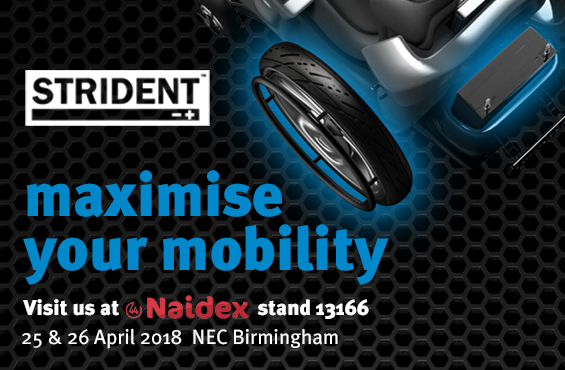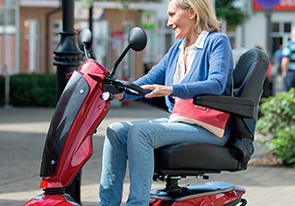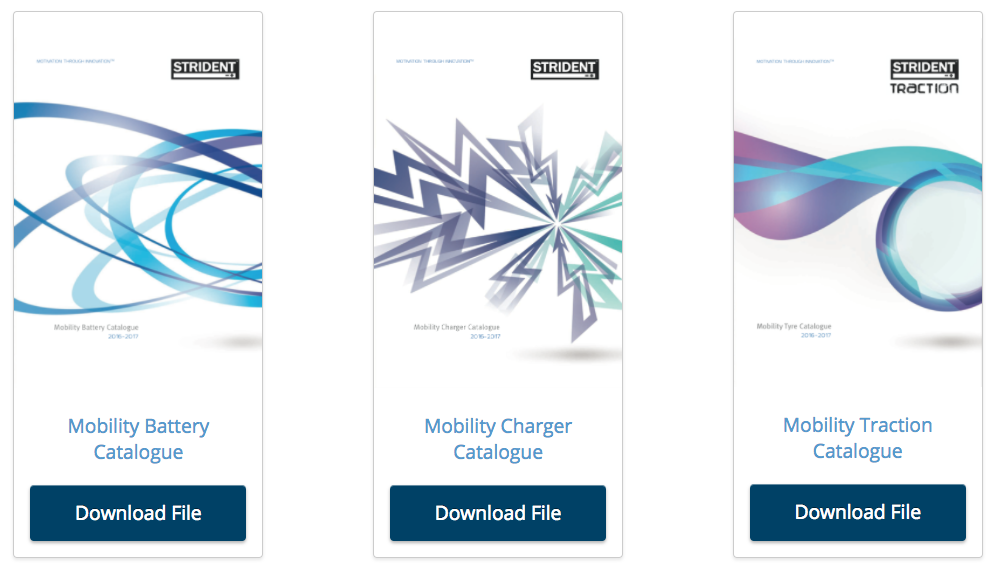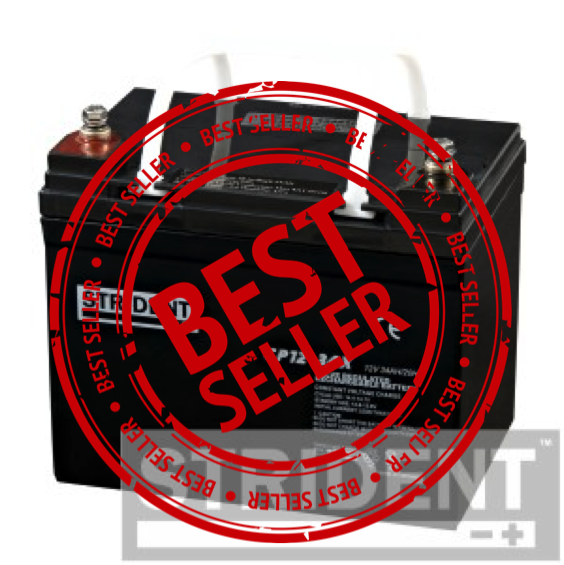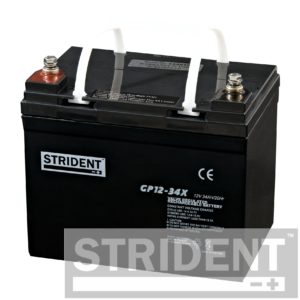Naidex 2018 Exhibitors | Strident exhibiting mobility batteries, chargers, testers and tyres
Looking for battery or tyre providers amongst the Naidex 2018 Exhibitors? Come to Stand Number: 13166
The Strident team are looking forward to joining the Naidex 2018 Exhibitors on the 25th and 26th of April 2018 at the NEC Birmingham. Picking up on the theme of the Naidex Exhibition - Innovations for the Future of Independent Living - Strident will have their innovative battery technology on display. Included in this will be a range of chargers and testers to make sure you keep your mobility batteries in optimum condition. Finally, Strident have a traction range with tyres for all kinds of wheelchairs and mobility scooters.
You can see our full exhibitor entry and an introductory video in the Exhibitors section of Naidex Exhibition website.
Ask Strident a question about batteries, chargers and testers
If you are looking for inspiration as to how to look after the batteries and tyres upon which you depend, then we'd welcome a few minutes of your time on the stand. We love to answer questions - however random! Ask us:
- how to get the maximum range out of mobility scooters and powered wheelchairs
- how to make mobility batteries in scooters, lifters and hoists last longer
- about the different kinds of batteries available
- which battery is the right one for which task etc.
You'll find us at stand number 13166.

Why Strident?
If you have not already come across Strident products in your local or online retailer, here is a quick rundown of why you should take a look while attending the Naidex 2018 Exhibition.
Why use our batteries?
Today it is apparent that there is no universal battery to fit every application. We recognised this at Strident and invested in R & D and extensive product testing. The result is a battery that is ideally suited for the medical market, one that will sustain high demands of constant use and will perform to a high number of cycles. This battery gives dependent users the confidence in having power when and where they need it.
Why use our chargers and testers?
The consistency of charge produces optimum battery performance. As such, the Strident range of chargers has been carefully selected to provide that consistency. By utilising the three critical stages required for quality battery charging, the Strident range gives the peace of mind to achieve the very best from your equipment. With the use of the Strident intelligent three-stage charging technique, premature battery failure is significantly reduced by ensuring the correct levels of charge are applied at every stage regardless of size. This technique eliminates the risk of gassing that is often caused by overcharging by traditional single-stage charging. Furthermore, this also maintains plate quality at its best performance level by reducing compound breakdown.
Why use our traction products?
With over 15 years experience in the mobility industry, Strident is well placed to offer the broadest range of high-quality mobility consumables including a full range of mobility tyres. Whether you are looking for Tyres, Tubes, Pneumatic or Solid, you will find a solution for your traction needs.
Finding your way to see the Naidex 2018 Exhibitors
The 7 Essential Rules for operating Mobility scooters and powered wheelchairs
If you are new to mobility scooters or powered wheelchairs – or a family member or close friend is just about to acquire one – here is our quick 7 essential rules for legally and safely heading out and about.
Rule #1 – You may need to register your scooter
Whilst you don’t need a driving licence to drive a mobility scooter or powered wheelchair, you may well have to register it. Broadly there are two categories:
- class 2 invalid carriages – which cannot be used on the road (unless there is no pavement). These have a maximum speed of 4mph.
class 3 invalid carriages - can be used on the road, and have a maximum speed of 4mph off the road, and 8mph when driven on the road. You must be 14 or over to drive a class 3 invalid carriage.
You don’t need to register a class 2 invalid carriage.
You do need to register class 3 invalid carriages.
Rule #2 – Make sure your class 3 invalid carriage has the following:
- maximum weight (unloaded) of 150kg
- maximum speed of 8mph and a device to limit its speed to 4mph
- maximum width of 0.85 metres
- working and efficient brakes
- front and rear lights and reflectors
- hazard warning lights function
- horn loud enough to be heard clearly
- rear view mirror
- an amber flashing light if it’s used on a dual carriageway
Please make sure you have all of these as the police could stop you if your class 3 scooter or powered wheelchair doesn’t have these features.
Rule #3 – What to do/not do when driving on a road
First, remember that you can only drive on the in a class 3 invalid carriage and that the maximum speed is 8mph. Follow the Highway Code at all times.
You can’t drive on bus lanes, cycle lanes or motorways.
Don’t use dual carriageways with a speed limit of over 50mph. If you go on a dual carriageway use an amber flashing light for visibility.
Rule #4 – Freedom to drive on footpaths and parking
All mobility scooters and powered wheelchairs can legally travel at a maximum of 4mph on footpaths or in pedestrian areas.
Please keep off cycle paths marked ‘cycle only’.
Rule #5 – Considerate Parking
Consider your scooter or powered wheelchair as you would a car. All normal parking restrictions apply.
Your vehicle shouldn’t be left on a footpath or pedestrian area on its own if it gets in the way of other pedestrians, including wheelchair users and people with prams or pushchairs.
Rule #6 - Who can use a mobility scooter or powered wheelchair
- anyone who has trouble walking because of an injury, physical disability, or medical condition
- if you are demonstrating the vehicle to a potential buyer
- if you are conducting training for a disabled user
- if you are taking the scooter or wheelchair to or from maintenance or repair
Rule #7 - No vehicle tax but remember registration and insurance
You’ll be glad to hear that there is no vehicle tax for any mobility scooter or powered wheelchair. Do see rule #1 about needing to register class 3 invalid carriages.
To register a class 3 invalid carriage, complete form V55/4 for new vehicles, or V55/5 for used vehicles. Download either of these forms from the DVLA’s online ordering service. Follow the instructions and return the form by post (currently the only option).
Insurance: Whilst you don’t actually need insurance for a mobility scooter or powered wheelchair, it is strongly recommended in case of any accident.
Maintenance
In addition to all this great guidance, do please keep you Mobility Scooter well maintained. If you are looking for new batteries, chargers or tyres for your mobility scooter, take a look at our catalogues page. Click the image below to take you there.
12v 34ah mobility battery – the UK’s most popular?
As we near the end of the year, we will now start to see all the lists of “top things in 2016”. So, we are going to strike first and declare the 12v 34ah mobility battery THE most popular battery for the mobility vehicle market.
Whilst we won’t pretend to have done a statistically representative poll of the whole market, we have seen the 12v 34ah battery consistently be our best seller through our large network of mobility distributors. So why is this?
First of all due to Scooter Manufacturers
The first simple reason for this high demand is that the 12v 34ah is one of the most popular industry standard batteries that mobility scooter manufacturers put on their vehicles. They specify such a deep cycle rechargeable battery to match the typical pattern of use that a mobility scooter gets.
Secondly - The balance of power output and length of operation
If you think of the contrast between a car battery and a mobility scooter battery, the car battery is used predominantly for a short burst of high energy to start the car. This kind of battery is never propelling the car!
A mobility scooter, however, has a different requirement and the battery is typically going to be for a more constant use e.g. driving the scooter from a house to local shops or for a visit to friends and family. The battery is, of course, propelling the vehicle, which takes a certain amount of energy to achieve.
For the average user weight and travelling distance required, the 12volt battery rated at 34 amp hours (AH) would suffice in the majority of applications
Performance vs Budget
Finally, we believe the popularity of this 12v 34ah battery is due to the match between performance and cost. There are always more powerful batteries but costs start to rise. Cheaper batteries either don’t hold the charge or don’t deliver enough operating time to make them a good choice. So the 12v 34ah does seem to be in a good price/performance place for the average scooter.
Why use Strident’s 12v 34ah mobility battery
Take a look on our batteries page to see an outline of the key features of our batteries that make them work so well with mobility scooters, our range of high performing medical batteries extends to other medical devices like patient hoists. There are a few things in our design that optimise battery performance and life.
Specific details of our best seller can be clicking the image below:
